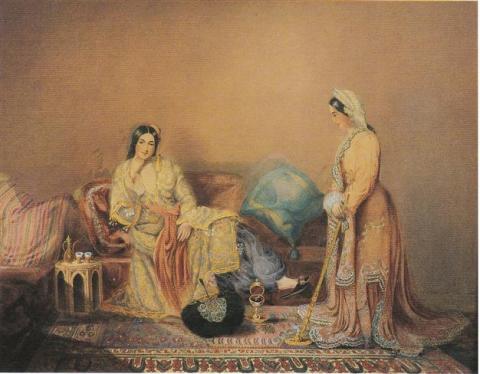Choosing a wardrobe like an Ottoman

A distinction was made between what a Muslim could wear and what a non-Muslim could wear. In fact, the Quran and the religious traditions form the basis for this differentiation From the earliest days of Islam, a distinction was made between what clothing a Muslim could wear and what a non-Muslim could wear. The Quran and the traditions form the basis for this differentiation.
The so-called Pact of the Caliph Omar, which may have been issued to protect non-Muslims in Syria after the Arab conquest, lays down a number of conditions that include dressing in the same way no matter where they were and wearing a specific belt.
An Armenian man
In later centuries, non-Muslims wore special emblems such as a yellow badge, which was later used in Medieval Europe to distinguish Jews. Non-Muslims also had to wear medallions around their necks when they went to the hamam, and unless specifically ordered to, they were prohibited from wearing crosses or icons on their dress.
During the 14th century, the Ottomans followed in the footsteps of previous Muslim governments. The only difference was that initially the majority of the people over whom they ruled were Christians:
Mostly Greeks and Armenians. Fatih Sultan Mehmed issued a decree relating to the worship and customs of non-Muslims some time after the fall of Constantinople in 1453. In it, he basically assured them that they could continue their lives as before; some have thought this also referred to freedom of dress, even though there's no mention of it in the document. The number of Jews in Anatolia was small until after the Spaniards expelled them from Spain in 1492, later followed by Portugal and France.
Under these circumstances, it would have been...
- Log in to post comments










